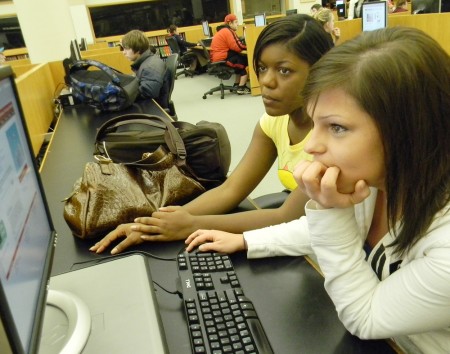
According to the study, graduation rates among white students were 40.2 percent from 2006-08, while black students had a much lower graduation rate of 15.9 percent.
Vice President of Diversity and Inclusion David Pilgrim said the 24.3 percent gap is due to a difference of college preparation between Ferris’ black and white students.
“Many students from poorer schools, and this includes a disproportionate number of minority students, are first generation college students,” said Pilgrim. “They must learn not only the substantive material in courses, but how to negotiate a strange environment.”
The Washington-based organization reported Ferris as having the 16th highest gap of the 294 colleges and universities studied. Saginaw Valley State University ranked alongside Ferris with a 24.3 percent gap as well.
Vice President of Student Affairs Daniel Burcham said Ferris’ graduation gap is a complex issue for the university. Burcham said factors such as ACT scores and socioeconomic status often affect student success.
“Because of the Ferris mission, we proudly work with students whom we know are high risk and try to assist them in the difficult transition from high school to a university,” said Burcham.
Burcham said Ferris has been addressing these issues by providing various student grants and academic workshops such as Structured Learning Assistance. Burcham said The Office of Multicultural Student Services has also worked to increase success among minority students on campus.
“We are working very hard to close the graduation gap between the two groups,” said Burcham. “Basically, this means providing services that will assist students academically, economically and socially.”
Atop the list of schools mentioned was Wayne State University with a 34 percent gap. California State University-Fresno followed in second place with 31.8 percent.
FSU junior Blake Mattison said he feels graduation rates should be mostly attributed to the student’s desire to succeed.
“I think it comes down to the person and whether that person has the drive, motivation and desire to continue,” said Mattison.
Graduation rates for Ferris’ black students have increased from 11 percent for students enrolling in fall 1999 to 20 percent for students enrolling in fall 2003. Pilgrim said he believes this is because of the university’s reputation of being a diverse campus.
“We must continue the fine work of getting and keeping students engaged,” said Pilgrim. “Finally, we must continue our efforts to make sure that every student who comes to Ferris believes that the university belongs to them as much as it belongs to anyone.” n
